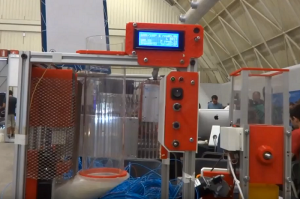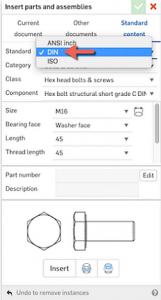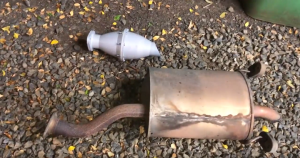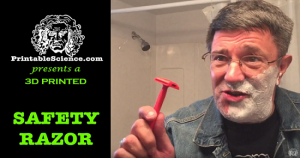 Florida-based company Sintavia arrived on the additive manufacturing scene in 2015, and has since made an impact on the industry through the development of new printing processes and a new facility. At the beginning of this year, it took a big step forward as a contributor to the aerospace industry through a contract with Honeywell. The company has become an independent metal additive manufacturing company for the aerospace and defense and oil and gas industries. It possesses an impressive array of equipment, including nine high-speed metal 3D printers, a hot isostatic press, a vacuum heat treatment furnace, an industrial CT scanner, and a wire EDM unit. Sintavia also has a variety of mechanical testing equipment, a full metallurgical laboratory and a micro powder lab.
Florida-based company Sintavia arrived on the additive manufacturing scene in 2015, and has since made an impact on the industry through the development of new printing processes and a new facility. At the beginning of this year, it took a big step forward as a contributor to the aerospace industry through a contract with Honeywell. The company has become an independent metal additive manufacturing company for the aerospace and defense and oil and gas industries. It possesses an impressive array of equipment, including nine high-speed metal 3D printers, a hot isostatic press, a vacuum heat treatment furnace, an industrial CT scanner, and a wire EDM unit. Sintavia also has a variety of mechanical testing equipment, a full metallurgical laboratory and a micro powder lab.
 Today, Sumitomo Corporation of Americas (SCOA), the largest subsidiary of Sumitomo Corporation, announced that it has acquired a minority investment in Sintavia. The purpose of the investment is to leverage SCOA’s network in the global aerospace and oil and gas industries, while accelerating Sintavia’s growth around the world.
Today, Sumitomo Corporation of Americas (SCOA), the largest subsidiary of Sumitomo Corporation, announced that it has acquired a minority investment in Sintavia. The purpose of the investment is to leverage SCOA’s network in the global aerospace and oil and gas industries, while accelerating Sintavia’s growth around the world.
“SCOA has spent decades building an enormous global network within several industries, including Aerospace and Oil & Gas,” said Kenichi Hyuga, SVP and General Manager of SCOA’s Construction and Transportation Systems Group. “We believe Sintavia’s highly advanced technology will add immediate value to our current business relationships, and position us for even greater business opportunities in the future.”
 SCOA has been in business since 1952 and is headquartered in New York City, with offices in eight major US cities as well as in Central and South America. The company pursues trade, marketing and investment relationships with business throughout the region and acts as an organizer of multinational projects. SCOA’s business units include Tubular Products, Environment and Infrastructure, Steel and Non Ferrous Metals, Transportation and Construction Systems, Chemicals and Electronics, Media and IOT Applications, Real Estate, Mineral Resources and Energy, and Food. The company, in partnership with its affiliate Presidio Ventures, has been adding to its portfolio by incorporating new technologies emerging from traditional industries.
SCOA has been in business since 1952 and is headquartered in New York City, with offices in eight major US cities as well as in Central and South America. The company pursues trade, marketing and investment relationships with business throughout the region and acts as an organizer of multinational projects. SCOA’s business units include Tubular Products, Environment and Infrastructure, Steel and Non Ferrous Metals, Transportation and Construction Systems, Chemicals and Electronics, Media and IOT Applications, Real Estate, Mineral Resources and Energy, and Food. The company, in partnership with its affiliate Presidio Ventures, has been adding to its portfolio by incorporating new technologies emerging from traditional industries.
“With SCOA as a long-term partner, we recognize that we are aligning ourselves with a global leader in multiple end markets that is committed to supporting our growth,” said Brian R. Neff, Sintavia’s Chairman and Chief Executive Officer. “Demand for Sintavia’s brand of quality AM production has boomed this year, and we recognize that in order to fully meet this demand over the coming years we will need to find a partner to help us manage growth. We believe we have found that partner in SCOA.”
 The partnership will benefit both companies, as they see potential to optimize products with additive manufacturing technology through Sumitomo group companies. One of those companies is wholly-owned subsidiary Howco, an integrated supply chain partner for the oil and gas industry. Howco provides steel alloys, turnkey machined and assembled components, and other products for upstream segments of the oil and gas sector, for which they will seek industry-specific business development opportunities together with Sintavia.
The partnership will benefit both companies, as they see potential to optimize products with additive manufacturing technology through Sumitomo group companies. One of those companies is wholly-owned subsidiary Howco, an integrated supply chain partner for the oil and gas industry. Howco provides steel alloys, turnkey machined and assembled components, and other products for upstream segments of the oil and gas sector, for which they will seek industry-specific business development opportunities together with Sintavia.
Discuss this and other 3D printing topics at 3DPrintBoard.com or share your thoughts below.


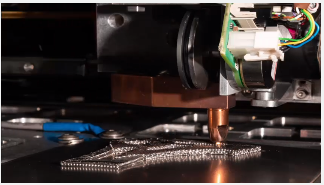
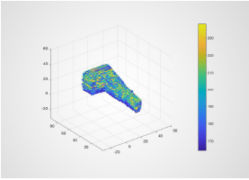
 provides precise closed-loop control of melting at the voxel level,” continues McCallum. “Since the wire is held in a precision motion system, we know exactly where the melt is deposited. Unlike a direct energy deposition system, there is no dripping or splashing. We use the precision wire feed system to measure and control how much metal goes into the melt pool. The electric circuit provides measurement and control of how much energy is applied to the melt. This combination of tightly controllable process parameters allows the system to deliver consistently dense (99.5%+) isotropic parts that are stronger than castings. In addition, the process data for every voxel is saved for post analysis. In combination with our machine learning technology, this provides the capability for non-destructive QA of printed parts.”
provides precise closed-loop control of melting at the voxel level,” continues McCallum. “Since the wire is held in a precision motion system, we know exactly where the melt is deposited. Unlike a direct energy deposition system, there is no dripping or splashing. We use the precision wire feed system to measure and control how much metal goes into the melt pool. The electric circuit provides measurement and control of how much energy is applied to the melt. This combination of tightly controllable process parameters allows the system to deliver consistently dense (99.5%+) isotropic parts that are stronger than castings. In addition, the process data for every voxel is saved for post analysis. In combination with our machine learning technology, this provides the capability for non-destructive QA of printed parts.”
